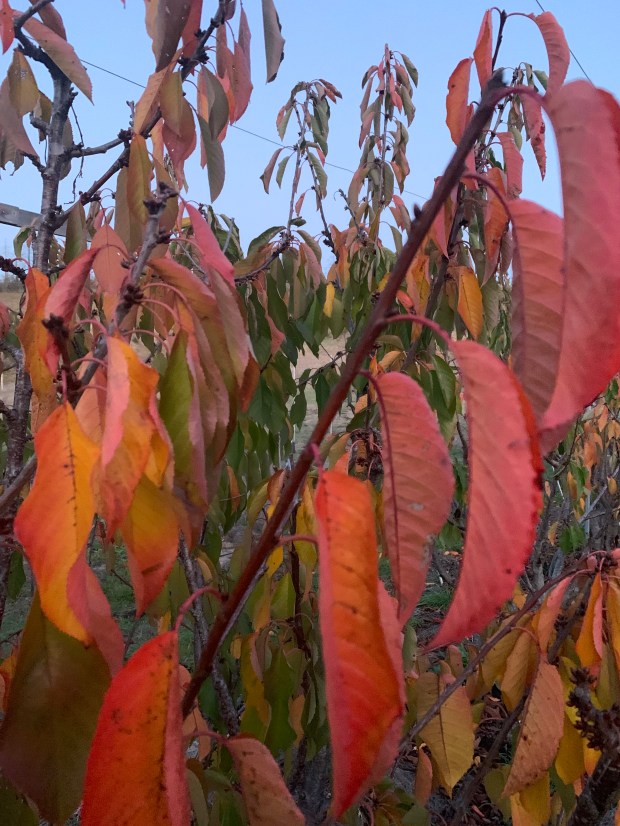A good friend from Back East (USA) once told me that they had a hard time getting used to California’s “seasons” where “winter is the time that the leaves fall from the trees, and the grass turns green.” Here we are, in our rainy season once again. And, unlike Back East, we are planting things: cover crops. The first bell beans we planted have cracked their seed coats, shooting a white root down into the moist soil; leaves have yet to emerge. The nights have turned so cold that the crickets stopped singing. The moon is big and the nights long, bright, and silent. The last few days, 3+ inches of rain soaked our farm. There are puddles everywhere.
Farm work
The pace of harrowing is the rhythm of the moment. I pull on gloves, hearing protection, a dust mask and hat then turn the key to start up the BCS tractor. Backing it out of the garage, the racket of the engine distracts wildlife from their otherwise peaceful times. Shifting into high gear the machine lurches forward and I pick up my pace, steering it down the road towards the orchard. I park it and then go get the heavy bags of cover crop seed: vetch, oats, and bell beans. Full bags are difficult to pour into the bucket and seeds spill onto the ground. Half full is heavy enough, and I take off down the rows, tossing seeds as evenly as I can, just where the harrow can scratch. Scoop, toss, swish…scoop, toss, swish. I sew bell beans at 3 seeds per square foot, oats at 10 and vetch at 5 per square foot…at least that is what I aim for. The seed spread is never that even and the resulting cover crop is patchy with one species growing more lushly than the others, different species in different places. The bucket empties quickly though I’ve covered good ground – back to the emptying bags for a refill.
After the Seed
After the seed is spread, I fire up the tractor and the heavy duty work begins. I put back on my hearing protection, hat, gloves and dust mask. The BCS is a bear to turn, but turn it must…at the end of every row it’s an about face. Back and forth the harrow scratches, sometimes bucking when it hits particularly hard soil. The harrow sometimes digs into one side or the other, pulling the heavy tractor sideways. I heave-ho to straighten it, tilt it back to clear debris, and then its back to harrowing long rows, pulling and weaving to miss the tree branches. After just 2 rows, I’m soaked with sweat. After 6 rows, I’m beat and its dark. Tractor in high gear again, off it goes to cover for the night. I haul the heavy seed bags back to the barn. The bucket gets stowed for the next cover cropping session. This BCS cover cropping takes us around 15 hours each year just for the orchard areas. The resulting lush growth gets mowed in the spring and raked under the trees for mulch and fertilizer.
Laughing birds poop
The blackbird cacophony is loud, a hundred birds calling from the skeletal branches of a big dead fire-scorched Douglas fir close to the orchard. They alighted there, flushing from a part of the orchard that I had planted in cover crop a week before. I walk up the hill and take a look where they had been: 3” tall fresh bright green oatgrass sprouts have been pulled up and messily scattered, but they left the bell beans alone. Soon, enough cover crop will be coming up all over the farm to more than satisfy the blackbird maw, but for now the early cover crop plantings bear the brunt of bird hunger. Bicolor and Brewers blackbirds strut and peck shoulder to shoulder. I reflect that they are leaving behind bird poop that would otherwise cost us a bunch if we were to import chicken manure: thanks, flock!
-this from my weekly blog at Molino Creek Farm’s webpage.





